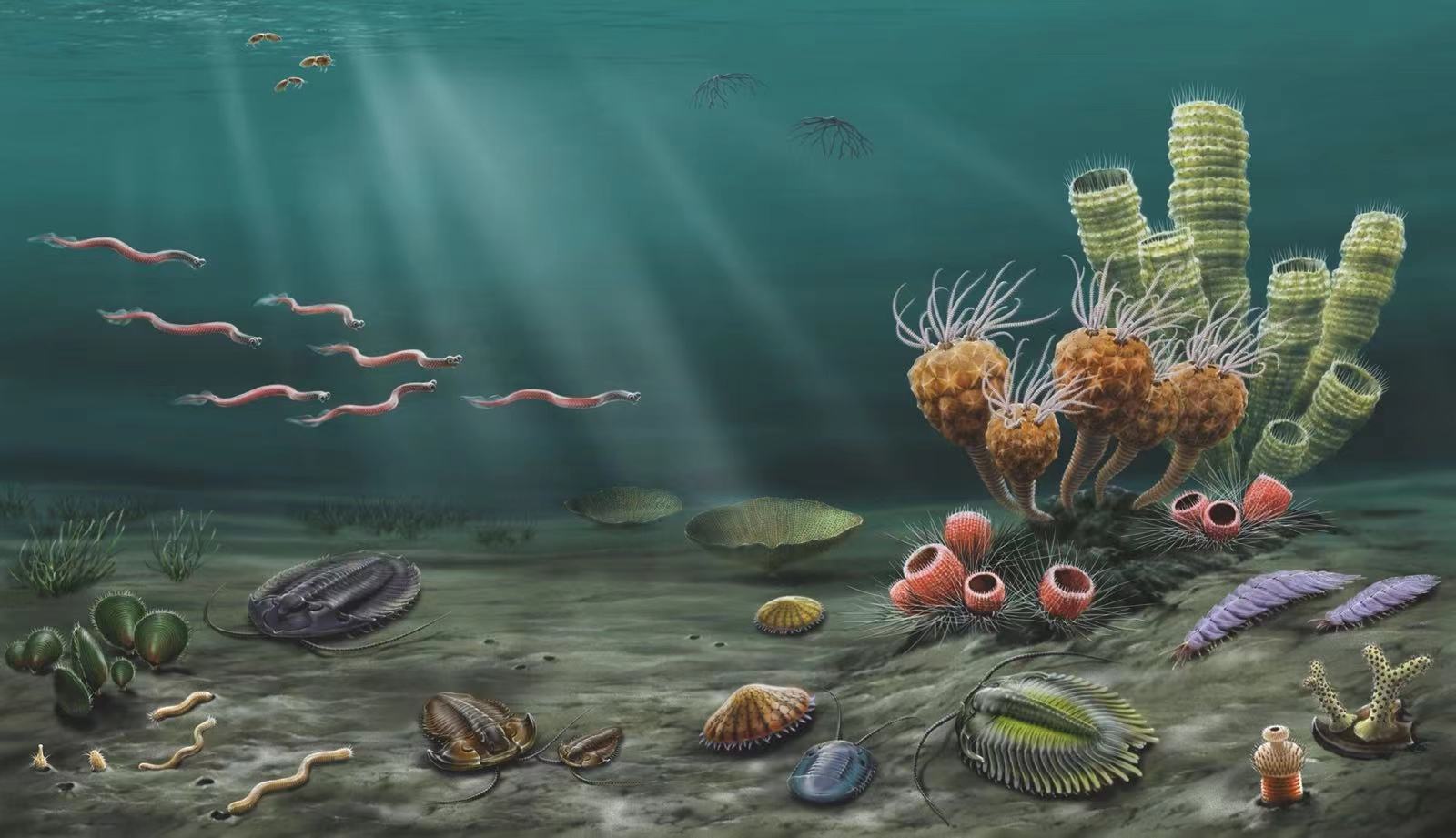From the beginning of the Ordovician, marine life began its great radiation, which was characterized by the rapid appearance of new orders, families, and genera, together with the replacement of existing groups.
The Great Ordovician Biodiversification Event (GOBE) constructed the essential framework for Paleozoic evolutionary faunas. During the GOBE, Cambrian faunas dominated by arthropods were replaced by Paleozoic faunas represented by filter feeders and reef-forming organisms.
Recently, a joint research team from the Nanjing Institute of Geology and Palaeontology of the Chinese Academy of Sciences (NIGPAS), Hunan Museum, and Central South University has reported a new Lagerst?tte, Liexi Fauna, from the Lower Ordovician of Yongshun County, Hunan Province. This discovery helps advance our understanding of the early GOBE.
This study was published in Proceedings of the Royal Society B on July 13.
The GOBE was originally studied and defined using skeletonized taxa rather than non-mineralized taxa. Exceptionally preserved Lagerst?tte accurately reflects the living community, providing new evidence for understanding the Ordovician marine world. However, only a few Ordovician Lagerst?tten have been discovered, especially from the Lower Ordovician.
The Liexi Fauna was discovered in the Madaoyu Formation of the Lower Ordovician. The conodont and graptolite assemblages indicate a mid-Florian, Early Ordovician age, making it slightly younger than the Fezouata Biota from Morocco and the Afon Gam Biota from North Wales. The Liexi Fauna probably preceded the GOBE's primary diversification by ~5–10 Myr.
Most of the documented fossiliferous Early Ordovician Lagerst?tten globally are thought to have occurred in high latitude regions, such as the Fezouata Biota, which was located near the South Pole during the Early Ordovician, and the Afon Gam Biota, which was located at a paleolatitude of 60 °S. During the Early Ordovician, South China was thought to be a typical tropical paleogeographical setting. In contrast to some other Ordovician Lagerst?tten preserved in restricted or anoxic environments, the depositional environment of the Liexi Fauna is thought to have been offshore from the lower shoreface, following the paleogeographic setting.
The Liexi Fauna includes up to 11 phyla of marine animals. It is characterized by abundant, diverse biomineralized fossils along with the exceptional preservation of some non-mineralized tissues and groups. In addition to a rich array of paleoscolecidans and diverse trilobites (including some with digestive tract preservation), the fauna also contains graptolites, extraordinarily complete echinoderms, exceptionally preserved sponges, possible Ottoia, machaeridian polychaetes, and other rare biomineralized specimens, signaling a flourishing Early Ordovician marine fauna.
Based on these discoveries, the researchers have proposed a biologically complex and complete marine ecosystem with diverse organisms and varied lifestyles, including endobenthic, sessile benthic, mobile benthic, nektonic, and planktic taxa.
This reconstructed complex ecosystem provides new evidence for significant biotic turnover from Cambrian faunas to Paleozoic faunas, by showing a mixture of Cambrian relics and Ordovician new arrivals.
This research is supported by CAS Strategic Priority Research Program (B) and the National Nature Science Foundation of China.

Ecological reconstruction of the Liexi fauna (Credit by NIGPAS)
Contact:
LIU Yun, Propagandist
Email: yunliu@nigpas.ac.cn
Nanjing Institute of Geology and Palaeontology, Chinese Academy of Sciences
Nanjing, Jiangsu 210008, China
